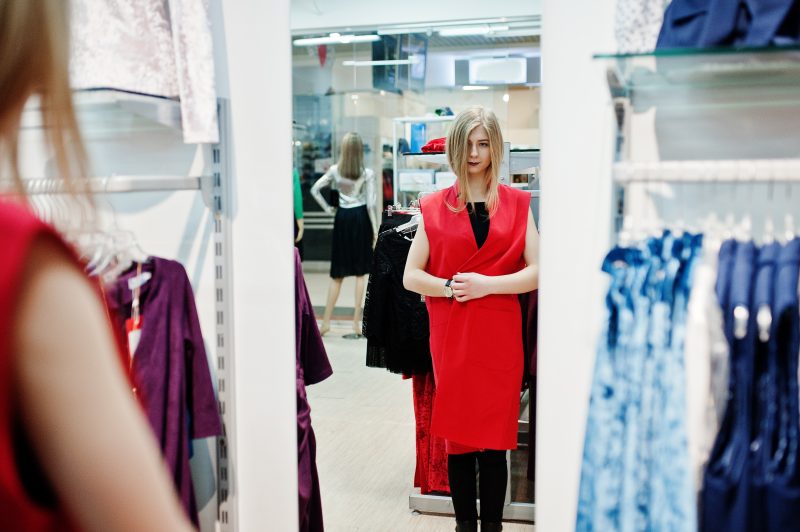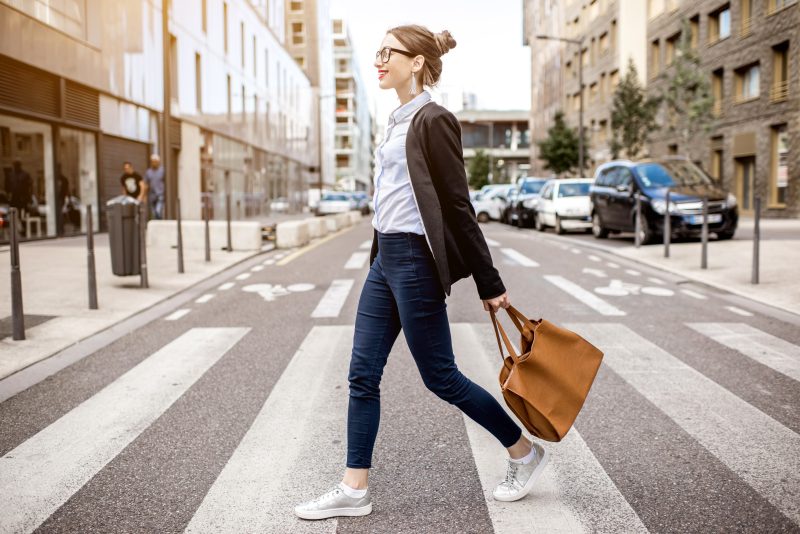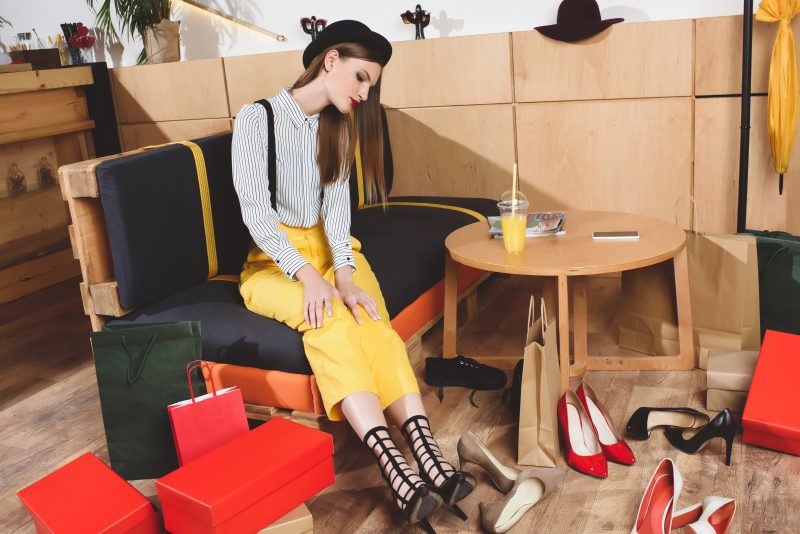Okay, so picture this – I’m standing in Target last week, holding up a plain white tee for the hundredth time, when I suddenly remembered something that made me laugh out loud. Right there in the toddler clothing section, with Emma tugging on my leg asking for Goldfish crackers.
It was this conversation I’d had with my old PR colleague Sarah maybe six months ago. She’d moved to New York after her divorce (living her best life, honestly), and somehow landed this dream job working with fashion stylists for magazine shoots. Anyway, we were FaceTiming – me covered in what I’m pretty sure was applesauce, her looking impossibly chic in her Brooklyn apartment – when she dropped this bombshell about how all these high-end fashion people secretly shop at… wait for it… regular stores.
“Taylor, you’re not going to believe this,” she’d said, practically whispering like she was sharing state secrets. “These stylists who work with actual celebrities? They’re buying basics at the most normal places and just cutting the tags out.”
I mean, I knew fashion was full of smoke and mirrors – my PR days taught me that much. But hearing Sarah talk about watching a stylist pull plain black tights out of a grocery store bag backstage at some fancy shoot? It was like finding out the Wizard of Oz was just some guy behind a curtain. Which, honestly, he was, so maybe not the best analogy, but you get what I mean.
This whole thing has been stuck in my head ever since I started trying to rebuild my wardrobe after… well, after becoming a mom and forgetting I was a person with a body that existed outside of its function as a snack dispenser and jungle gym. Because here’s the thing – we’re all out here thinking we need to spend ridiculous money to look good, when apparently the people whose literal job it is to make other people look amazing are shopping at the same places we already go.
Sarah told me about this one stylist – let’s call him Marcus because I can’t remember his actual name and Sarah would kill me if I got the details wrong – who was working on some editorial spread for a major magazine. You know the type, where everything looks effortless but probably took twelve hours and a team of six people to achieve. The model was supposed to be wearing this “perfectly simple” white t-shirt that looked expensive and luxe and all those things we associate with having your life together.
The shirt? Seven dollars from a regular store, tags removed. It photographed better than the eighty-dollar designer version they’d tried first.
I’m sitting there listening to this, bouncing Jackson on my hip while he gnawed on a teething ring, thinking about how I’d been agonizing over whether to spend forty dollars on a basic sweater from Madewell. Meanwhile, these industry experts are out here proving that sometimes the affordable option is actually… better?
It reminded me of something that happened when I was still working in PR, before kids, back when I thought spending sixty dollars on a camisole made me sophisticated. We were putting together a presentation for this client, and my boss Janet – who always looked incredibly put-together in that effortless way I desperately wanted to master – complimented this silk blouse I was wearing. I’d found it at this little boutique and felt so proud of my “investment piece” purchase.
“Oh, this old thing?” she’d laughed when I asked about her gorgeous cream-colored sweater. “Target clearance. Eight bucks. I bought three.”
Eight. Dollars.
Janet, who I’d been secretly trying to emulate for months, was shopping clearance racks while I was blowing my paycheck on single items I was afraid to wash. The irony wasn’t lost on me, but somehow I forgot this lesson completely once I became a mom and started overthinking every purchase like it was a life-altering decision.
So anyway, Sarah’s fashion industry intel got me thinking about basics differently. Not just the obvious stuff – though let’s be real, good underwear is good underwear regardless of the price tag – but the foundation pieces that make everything else work. The things that aren’t supposed to be the star of the show but somehow make or break the entire outfit.
Like, apparently fashion photographers are obsessed with how certain fabrics look under lights. Sarah told me about this shoot where they went through four different “white” t-shirts because some whites photograph weird – too transparent, or they get this bluish tint, or they look dingy even when they’re brand new. The one that worked? Basic cotton from a chain store, nothing fancy, just the right weight and weave to look crisp and clean on camera.
This is so typical of the fashion world, isn’t it? All this mystique around what makes something “good,” when often it comes down to really practical stuff like thread count and fit. Not romance or heritage or whatever story they’re trying to sell you in those glossy ads.
The tights situation really got me though. Sarah described watching a model do jumping jacks in these supposedly amazing designer stockings, only to have them completely fall apart. Meanwhile, the backup pair – basic drugstore tights – lasted through an entire day of shooting, including a sequence where the model had to crouch down repeatedly for some “candid moment” shots.
I thought about all the tights I’ve destroyed just trying to wrangle my kids into car seats. How many times I’ve been running late for school pickup and discovered a run right up the back of my leg. Maybe I’ve been overthinking this particular wardrobe category too.
Then there’s the whole thermal underwear thing, which sounds about as glamorous as discussing diaper brands but is apparently crucial for those gorgeous winter fashion spreads. You know the ones – models looking elegantly windswept on some mountaintop, wrapped in coats that cost more than my car. Sarah said they’re usually layered up in basic thermal tops and bottoms underneath, the kind you’d find in the camping section of any department store.
“Nobody looking at those beautiful images would ever guess,” she’d said, “but without good base layers, those outdoor shoots would be impossible.”
It makes sense when you think about it. Fashion is visual – what matters is how things look, not necessarily how much they cost or where they came from. But somehow we’ve gotten so caught up in brand names and price tags that we forget the actual goal is just… looking good and feeling comfortable.
This whole conversation changed how I approach shopping now, especially for basics. Instead of agonizing over whether something is “worth it” or trying to decode which expensive items are actually better, I focus on what works. Does this white tee lay nicely? Are these leggings opaque enough? Do these socks stay up all day without cutting off my circulation?
Sarah mentioned that many stylists actually prefer working with affordable basics because there’s less pressure. If a seven-dollar t-shirt gets makeup on it or tears during a shoot, it’s not a crisis. They can grab another one. But when you’re dealing with sample pieces worth hundreds or thousands of dollars, every little accident becomes a major production.
“The expensive stuff is often more delicate,” she explained. “Great for red carpets and special occasions, but for everyday styling work? Give me something I don’t have to baby.”
This resonated with me so much as a mom. I need clothes that can handle real life – spilled juice boxes, playground dirt, unexpected toddler hugs with chocolate-covered hands. The idea of wearing something I’m constantly worried about damaging just… doesn’t work for my actual life.
The other thing Sarah mentioned was fit. Apparently, expensive doesn’t always mean better-fitting. Some designer basics are cut for very specific body types or styled to look good on hangers rather than actual humans. Meanwhile, mainstream brands often do extensive testing to make sure their basics work for a wide range of bodies and lifestyles.
“A thirty-dollar sweater that fits perfectly and washes well,” she said, “is better than a hundred-and-fifty-dollar sweater that shrinks or pills or makes you look boxy.”
This might be the most practical fashion advice I’ve ever heard, honestly. All those years I spent thinking expensive automatically meant better quality, when sometimes it just means better marketing.
So now when I’m shopping for basics – which, let’s be real, is most of my shopping these days – I think about what industry professionals would choose. Not the stuff they’d put on red carpets or use for high-concept editorial shoots, but the everyday workhorses that make everything else possible. The pieces that photograph well, fit comfortably, wash easily, and don’t require a second mortgage.
It’s funny how learning about the fashion industry’s practical side has made me more confident in my own choices. Turns out the “secrets” aren’t that mysterious – they’re just good, functional clothes that happen to be affordable. Who knew that the path to looking put-together was paved with reasonably priced basics and common sense?
Now I just need to convince my husband that my Target runs are actually high-level fashion research. Think he’ll buy that?



